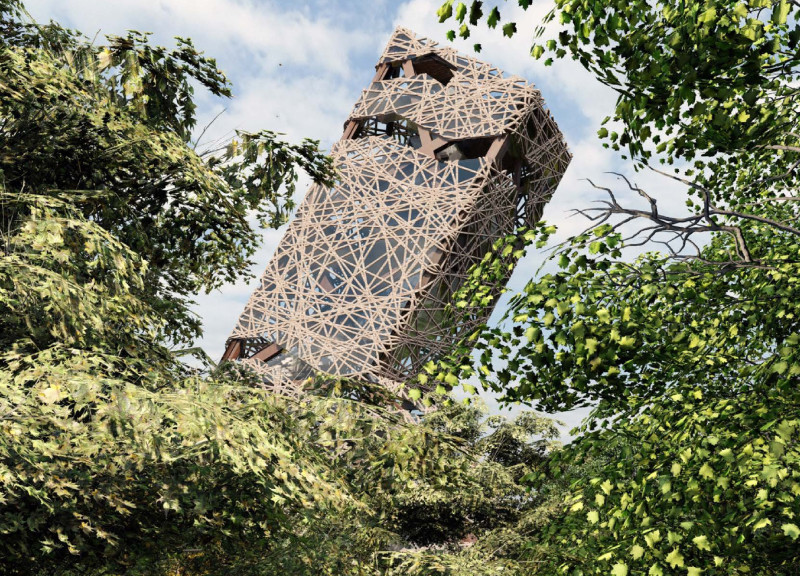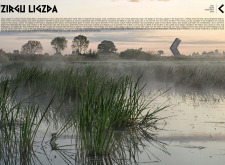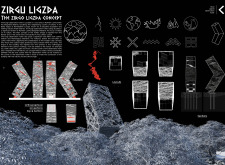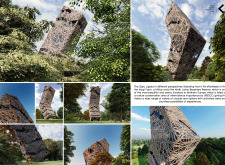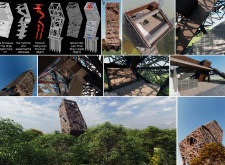5 key facts about this project
Zirgu Ligzda Observation Tower is located in the North Latvia Biosphere Reserve, an area celebrated for its rich ecological diversity and beautiful scenery. It sits atop a hill at Kurgi Farm, where the design reflects a strong connection to the region's cultural identity, particularly through its focus on the endangered Latvian Ardennes horse breed. Named "Horses' Nest," the tower's concept highlights the significance of both the natural environment and the traditions linked to horse breeding.
Design Concept
The design emphasizes harmony between the building and its surroundings. The shape of the observation tower takes inspiration from organic forms found in nature. Its flowing outline mirrors the local landscape, creating a visual bond with the environment. This approach fosters a strong sense of place and a connection to the cultural heritage of Latvia.
Spatial Organization
The tower's spatial planning encourages visitors to engage with the landscape. Various viewpoints are integrated into the design, enhancing the experience of the natural beauty surrounding the tower. The arrangement invites exploration and reflection, allowing visitors to appreciate the relationship between the structure and its setting. Through these thoughtful layouts, the tower acts as a bridge connecting people to the local biosphere.
Material Considerations
Although specific materials are not mentioned in the presentation text, the overall design implies a focus on sustainability. The outer layer of the tower has a twisted form that reflects the natural curves of trees, reinforcing the architectural link to the environment. This choice supports the visual integration of the structure while also considering environmental impact and sensitivity to its surroundings.
The dynamic nature of the Zirgu Ligzda Observation Tower allows for a unique visual experience, changing based on the observer's position. This design flexibility enriches the interaction between the architecture and the landscape, making the tower an integral part of the natural scene. The forms capture the essence of the environment while respecting the cultural stories that resonate within the region.


